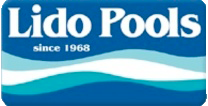Pros verses Cons
With the wet process, the mixing of batches is done in a plant and is supervised by a qualified technician, utilizing sophisticated computerized technology in the batching process. The results are a truly monolithic pour and a more consistent product, as it is not mixed on site. This method can be more demanding on the applicators as the wet process has a limited time to place and finish from the time of being batched at the concrete plant. The dry process has an advantage for the applicator during periods of extreme heat as the dry process is mixed on the job site allowing more time to work. However, material consistency is relying solely on the one or two job site men that are put in charge of mixing for that day. Any anomalies in mixing will undoubtedly result in a weak spot within the shell.
While the wet process or Shotcrete includes stone and gravel in the cement mix, Gunite does not. The strongest mixes are generally regarded to have stone as the aggregate as the more varied the aggregate sizes are, the greater both the compressive and tensile strengths. Gunite uses less water to hydrate but the surface can be more porous. Proponents from either side will claim their method to be of the greater tensile strength and thus implying a stronger shell.
The Lido Difference
While every company will proudly defend their preference of process, we at Lido believe that the pros of the wet Shotcrete process outweigh the pros of the dry process. Certainly tensile strength is important but so is a monolithic pour. Lidos combination of the monolithic pour together with a substantial structural steel design, which incorporates a superstructure of 10mm reinforcement bars unified in a grid like network centered at 8 intervals and combined with a superior double ring bond beam. Material thickness at the top of the wall or bond beam is 8". The floor is poured at 12" thick with the higher stress areas along the cove are increased to 14". Indeed a foundation that ensures unprecedented shell strength and longevity.





